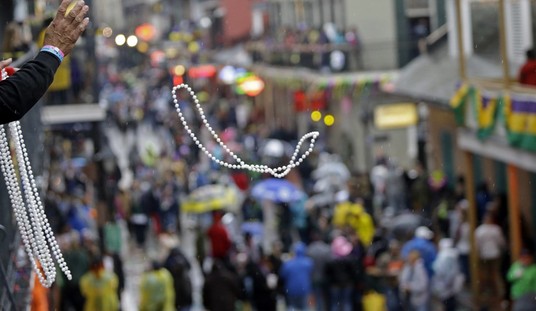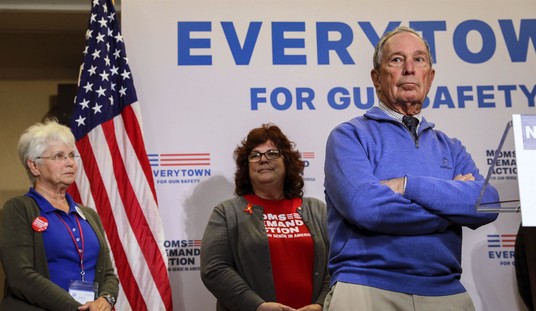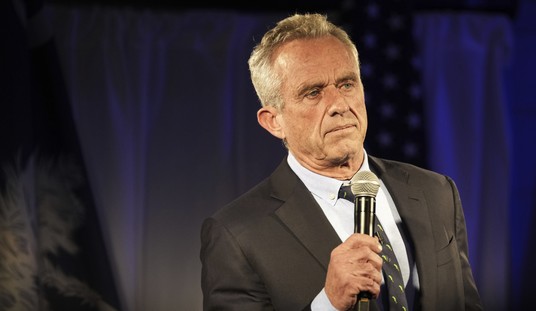
I’m in the process of wrapping up my first post in a series about my week at the “Harvard of Handguns,” Gunsite Academy. I spent five days (and part of a night) in the celebrated 250 Pistol course first developed by legendary firearms expert Col. Jeff Cooper.
The four instructors that led the class are among the best in the world. They average 25 years of experience in the military or in law enforcement. Each has fired hundreds of thousands of rounds in training, in addition to the rounds they’ve fired on duty either keeping us safe from criminals at home, or terrorists overseas. They’ve “seen the elephant” firsthand.
It isn’t an exaggeration to say that Gunsite instructors have been a driving force behind how America’s military, police, and concealed carriers use handguns. Cooper’s Modern Technique of the Pistol, color coded awareness system, and the four rules of gun safety, along with Harries’s flashlight technique, and the Tueller Drill all came from Gunsite instructors.
It is fresh off of this seminal experience that I come down from the proverbial mountain to this spew of idiocy by Marc Ambinder on how police should handle violent criminals.
The problem being — these officers did the right thing. They weren’t trained to use less-than-lethal force even when faced with a man who brought a knife to a gunfight. They weren’t trained to fire once. They’re trained to fire when they believe their lives (or the lives of civilians) are in imminent danger. This training helps protect the lives of police officers, and that’s good.
It is also, I think, training that poses significant costs and even danger to the public. Last year, New York City cops shot a man with a gun who had just killed a colleague on the sidewalk next to the Empire State Building. The suspect died. But nine New Yorkers were injured by gunfire that came from the guns of the police officers. Nine people shot, innocents, all, by the police. Even if, in this instance, the officers had much more of a reason to believe their lives were in jeopardy, we should not accept as a fait accompli, simply because this is true, the civilian casualties.
There are reasons officers, who are often technically trained to “shoot to incapacitate,” actually shoot to kill and shoot multiple times. Aim for the torso, they are taught. It’s a larger target. It will incapacitate the offender much more quickly. Of course, the level of incapacitation is most likely death if the torso is the target.
There are also good reasons to recalibrate this training to account for differences in the type of threat posed, and even differences in the aim points. I don’t expect officers to approach any scene of a strong-armed robbery with tear-gas cannisters. Guns they will have, and guns they must use.
Oh, really?
To his credit, Marc Ambinder is not trying to ratchet up racial tension in his screed. His “crime” is spreading his ignorance of:
- the use of force continuum,
- human physiology and psychology,
- short-range self-defense,
- ballistics,
- firearms operation,
- reaction times,
- and human nature.
[article continues on next page]

An ignorant comparison
Ambinder cites both the recent Kajieme Powell shooting in St. Louis and the shooting of Jeffery T. Johnson in Times Square in his argument against the use of lethal force by law enforcement officers. The two incidents were nothing at all alike, other than the fact that both featured two officers engaging armed subjects at close range.
In the recent Powell shooting in St. Louis (video below), Powell circled left to isolate the officer on the passenger side of the vehicle. Once Powell flanked the officer on the passenger side of the vehicle, he had essentially pinned him against the police car with no practical avenue of retreat. If the officer moved forward he would cross his partner’s line of fire, and he could not easily retreat backward without turning and exposing his back to Powell.
Powell ignored continued demands to drop the knife he was holding waist-high, where Powell could thrust it up under or through the officer’s body armor (police body armor is bullet resistant, but is not typically stab-proof).
Powell closed to within 8-9 feet before officers finally engaged him, far inside the 21-foot danger zone established by the Tueller drill for a knife armed opponent.Some experts argue than once someone with a knife closes to this distance that a knife is actually more dangerous than a firearm, as it can be in constant contact with the target, never runs out of ammunition, never jams, and can create a wider, numerous wound channels.
Despite this extremely close-range threat, both officers use textbook firing stances, and used aimed fire for each and every shot, well aware that there were a number of citizens nearby.
Listen carefully to the steady rhythm of the shots that begin at the 1:40 mark.
The steady rhythm is due to the officers firing, absorbing recoil, and obtaining a flash sight picture confirming their aim each and every time before firing. Each and every bullet was a well-aimed shot even though an armed suspect was just a lunge away from stabbing the nearest officer. Powell unfortunately died due to his decision to attack these police officers with a knife. No one else was injured because officers refused to fire until they absolutely had to, and took care to aim each and every shot.
The Times Square shooting that Ambinder also references could have hardly been more dissimilar.
[article continues on next page]
Jeffery T. Johnson murdered a former co-worker and was attempting to escape when a bystander told NYPD officers Craig Matthews and Robert Sinishtaj about the killing that had just taken place around the corner. When officers called out to Johnson at a range of roughly ten feet, Johnson turned and produced his weapon. Matthews and Sinishtaj immediately opened fire.
One officer fired nine shots, the other seven in the fusillade.
One officer closer to Johnson was more composed even though he had “happy feet” which kept him from establishing a stable shooting stance. The other officer gave up all pretense of training, and was point-shooting one-handed while he attempted to back away, jerking shots downward as he looked at Johnson instead of his sights as he was trained.
Johnson died in the hail of bullets, struck by seven shots. Nine bystanders were hit by police gunfire, though since the officers were ignoring their sights and jerking their triggers, their shots were generally low and did not cause any fatal injuries.
Lollipops and Rainbows
Ambinder seriously suggests that as armed men close with police officers at short-range, that officers should attempt to use tear pepper spray, or tasers, or some other sort of less-lethal device. He also suggests that officers should attempt to shoot at moving extremities to wound the suspect, and then wait to see if the suspect do the sensible thing and give up.
These are the words of a man trapped by his own ignorance and biases.
It has been heavily documented that tasers are one-shot devices that require perfect circumstances to work. When a suspect wears multiple layers of loose clothing—as Powell did, with a tee shirt and oversized jacket, or Johnson did with a heavy winter coat—the odds that both probes will penetrate to embed in the skin so that a charge can be delivered is greatly reduced. It is also a proven fact that tasers often fail to work on those who are on drugs, are filled with adrenaline, or simply have a tremendous force of will to power through even a perfect taser strike.
[article continues on next page]
Ambinder suggests that officers should just fire one shot. He is ignorant of the fact that handgun entry wounds don’t explode in a spray of blood like in the movies to let officers know that they’ve made a hit. He doesn’t grasp that suspects sometimes don’t immediately react to gunshots at all. Ambinder doesn’t seem to grasp that handguns are inherently weak, that handgun rounds are generally very survivable with even a center mass hit to the torso. He wants officers to stop fighting, to see if the criminal suspect will quit fighting as well.
Ambinder suggests that officers should attempt to aim at the arms and legs of armed suspects who are in constant motion. He does not seem to grasp that these moving parts are incredibly hard to hit, and shots fired at them greatly increase the chance that rounds fired will miss the target, progressing downrange to injure or kill law-abiding citizens.
Delusions of Competency
Far from saving lives, Ambinder’s armchair quarterbacking offers up suggestions that significant increase the risk to both law enforcement officers themselves and innocent people downrange. If his suggestions are followed more officers risk death, and more citizens—fathers and mothers, daughters and sons—risk being shot with bullets aimed at extremities that are almost impossible to hit, forcing officers to fire far more shots per incident to affect a hit on the target (if they hit it at all before the criminal kills them).
Ambinder’s suggestions only benefit criminals and those sick souls who profit when officers die and civilians become collateral damage.
Perhaps he should turn his attention to whatever his core competencies are, and let professional firearm instructors with decades of experience and reams of case studies and research on their side do what they do best to keep both officers and innocent bystanders alive.








Join the conversation as a VIP Member